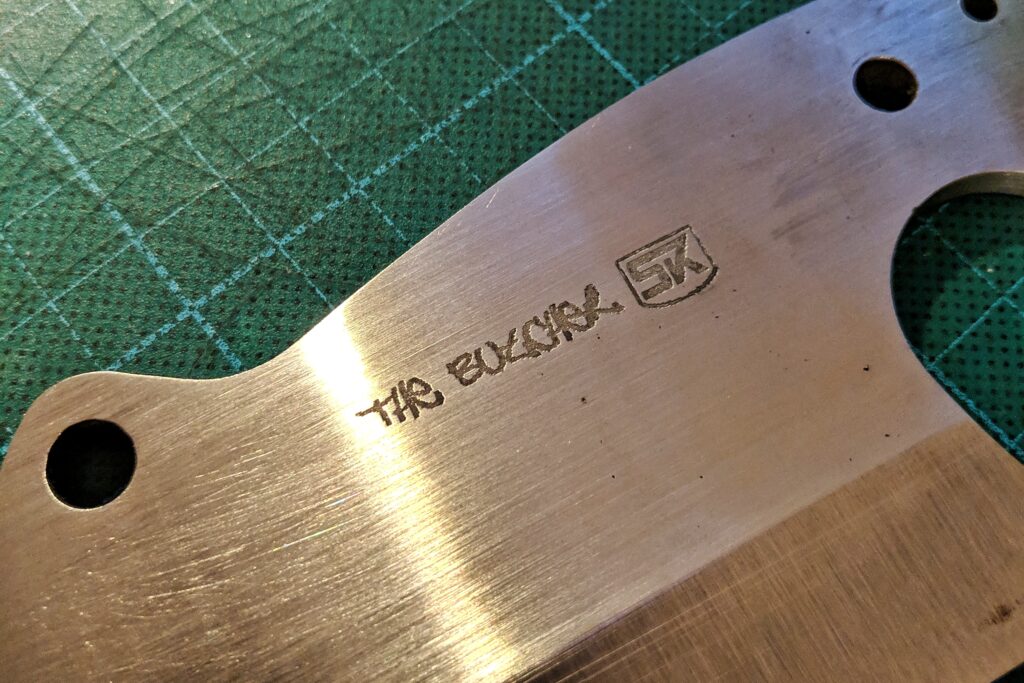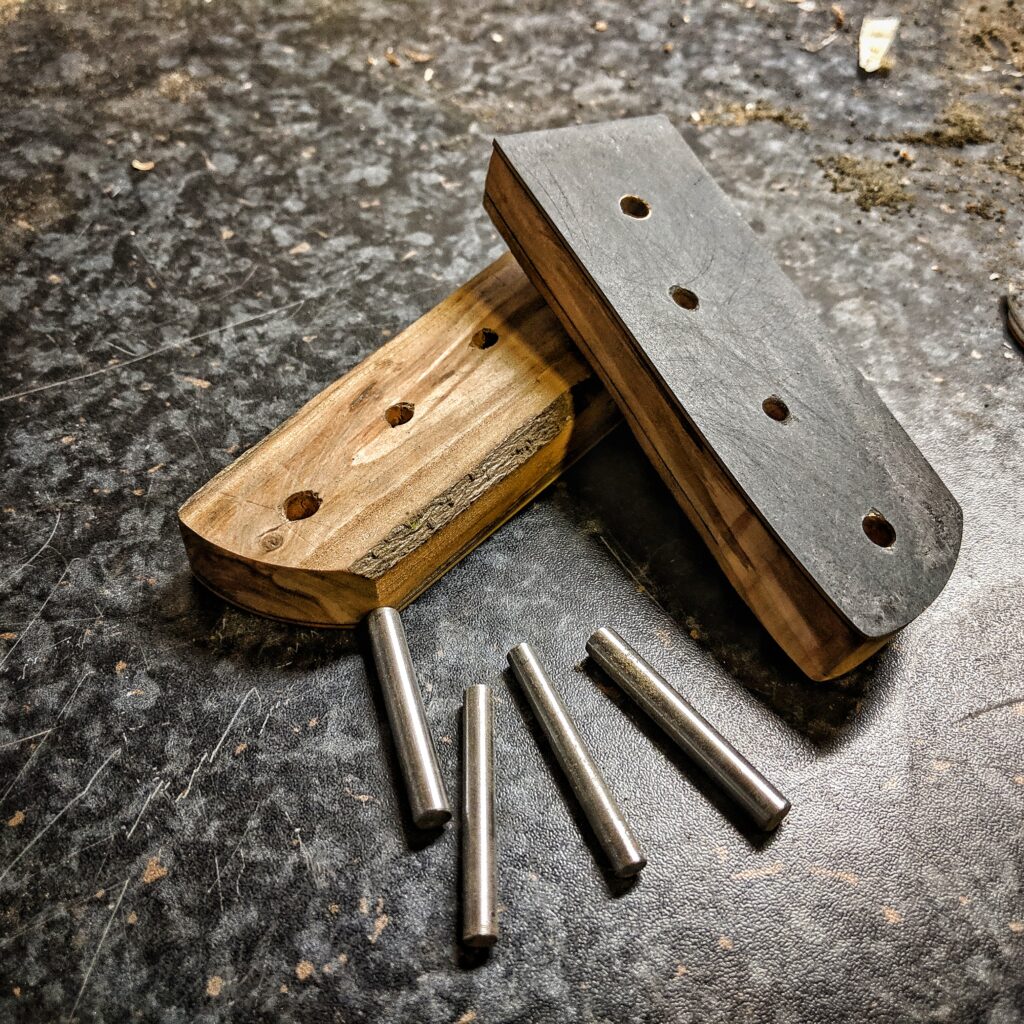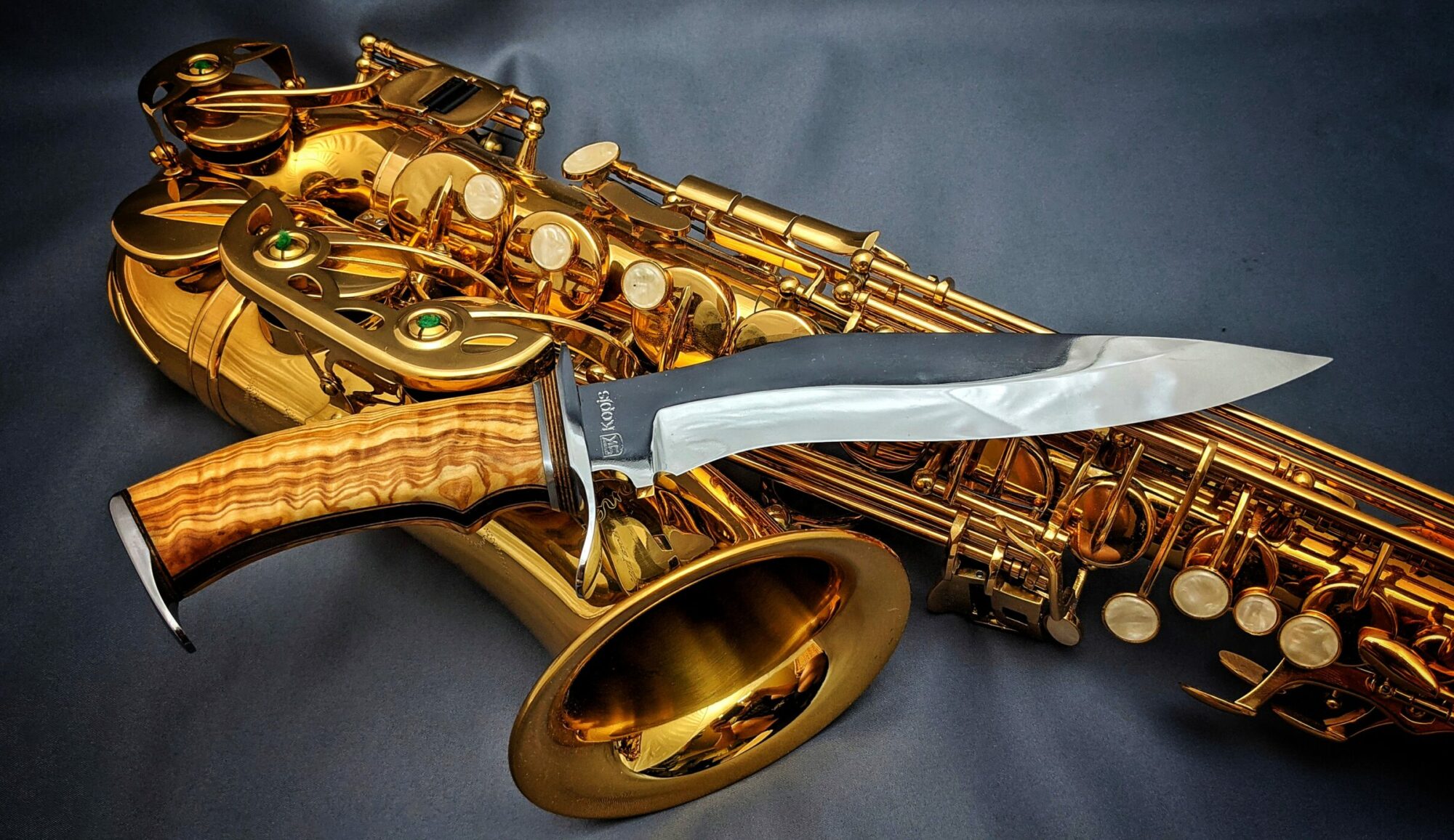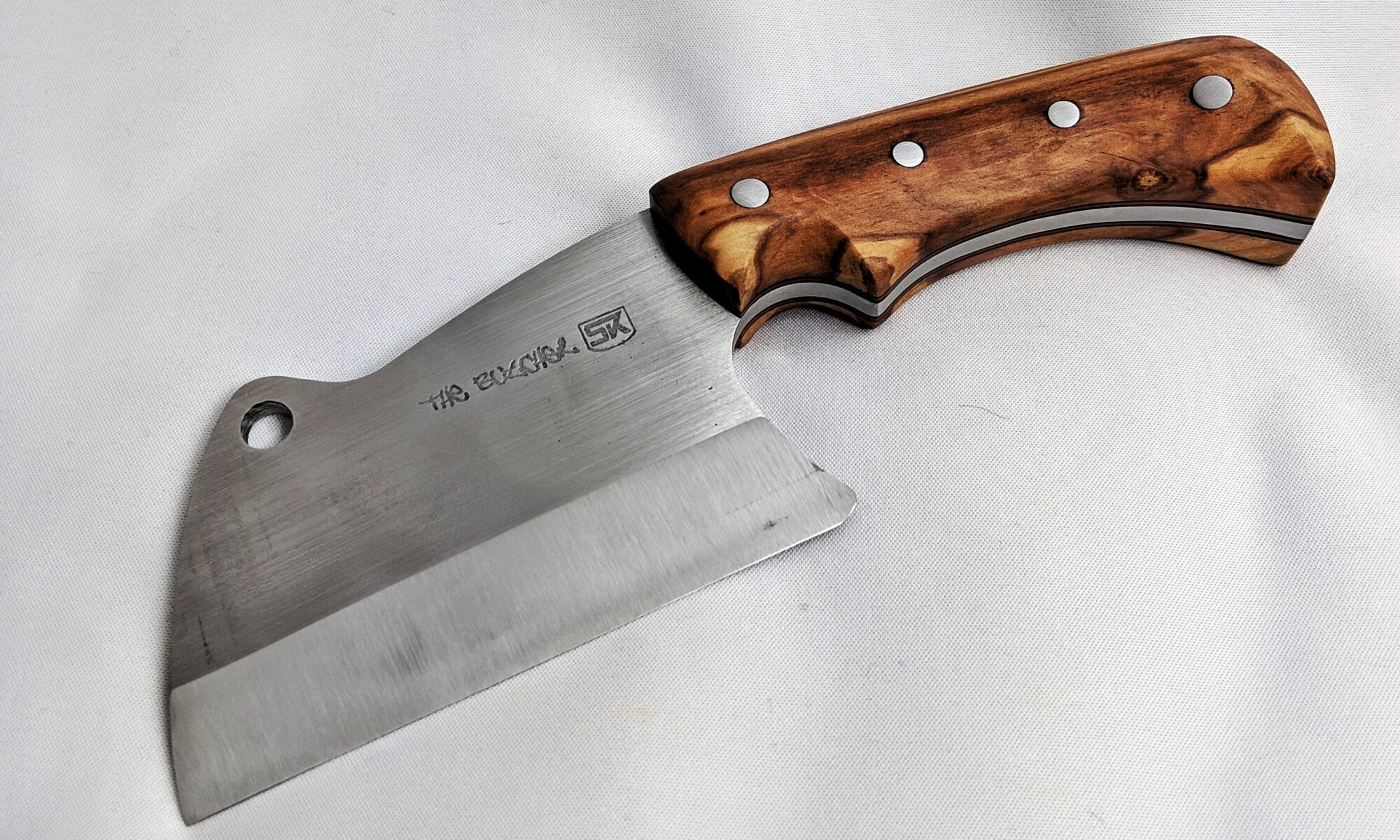I had some of the 4.5 mm 1.2235 (80 CrV2 or L2) steel of the bowie knife left. And as I had bought it as a 60 mm wide steel plate I wanted to make good use of the 200 mm piece left. I had seen a lot of meat cleavers from fellow knife makers and I had also thought about making something useful for the kitchen. I think there was more practical use for a kitchen knife, as the zomie apokalypse wasn’t near where my first knifes would be of good use. And many of our supermarket kitchen knifes are shitty anyways so I planned something on my computer.
The design phase went good. I wanted an handle which is a bit angled down and I liked the design of the handle of the outdoor knife I made for my father. Also I liked the idea of an arched spine that goes along the top of the whole knife. A hole in the top of the blade of a cleaver is mandatory I think.
Putting the paper stencil on the steel and cutting everything out with the angle grinder went nicely. What I did not like was the pattern the steel mill left on the plate and these marks where pretty hard to grind away. But finally I had my 240 grit scratch pattern on the steel.
The edge is completety straight and I anticipated the grinding of the bevels would be easy – I think I need a better grinder or at least some better belts – I already found Trizact belts for my machine so I will give them a try.
As this will be a heavy duty kitchen meat cleaver I wanted more durability of the design so I added another pin hole for the handle scales – just joking. I wanted to try something new and so I wanted 2 big and 2 smaller pins, just for the looks. Did I say I love my drilling machine?!
Next came the heat treatment. I already experimented in building a Venturi Burner but that did not work so well – that thing makes a lot of noise and the flame burns inside the tube – I think I will have to think of another design. Probably the tube is to big in diameter. But the forge gets hot with that thing too and I ended up with a proper hardened blade – file test was successfull. Then the blade went to the oven.

This is the first blade I tried etching my logo onto, and the name. I think “the utcher” fits nicely for a meat cleaver, even such a small one. Before I had removed the filthy remains of the heat treatment. And after the etching I refreshed the 240 grit scratch pattern. I also refreshed the bevel grinds as you can see in the pic I fckd up the scratch pattern there – I ended up with an extreme sharp scandi grind which goes straight to the edge with no secondary bevels.
Next came the handle. Last winter (2017/2018) our lovely small apple tree broke under the weight of the snow. The tree was just a bit over one meters high but it always had small delicious red apples. The whole family was sad to see it lying in the snow. I saved some of its bigger branches to build something from them – so why not as a knife handle where it could live forever for us?

I cut a piece out of the apple wood branch, just big enough for the handle and chose orange and black for my liners. First I laminated the liners to the wood blocks and let it dry for a day. The next day I glued the blocks to the blade and had to wait another 12 hours before I could continue with the handle.
Grinding the handle scales to the tang and bringing everything into an ergonomic shape went pretty good. I am still mazed how beautiful the apple wood turned out when everything was at 240 grit and I treated the handle with linseed oil varnish.
And yes the knife IS sharp. While preparing the knife for some photos I cut myself pretty badly.


